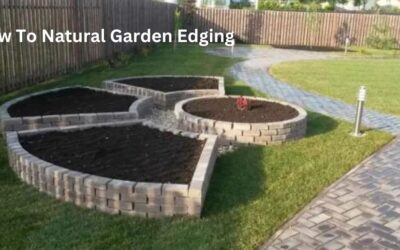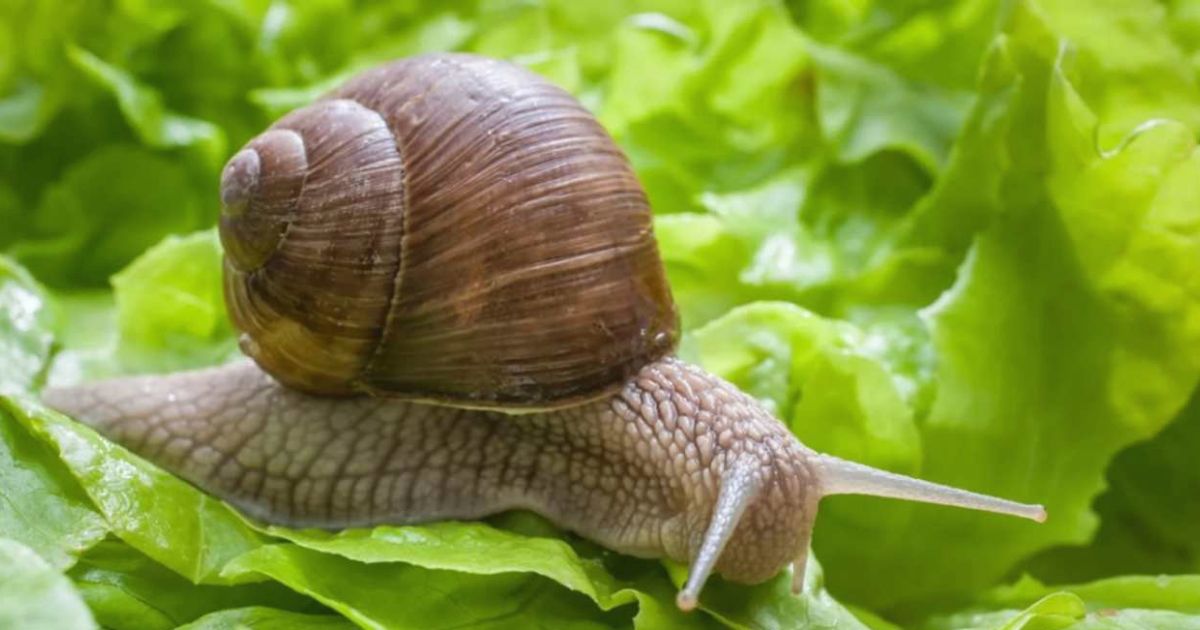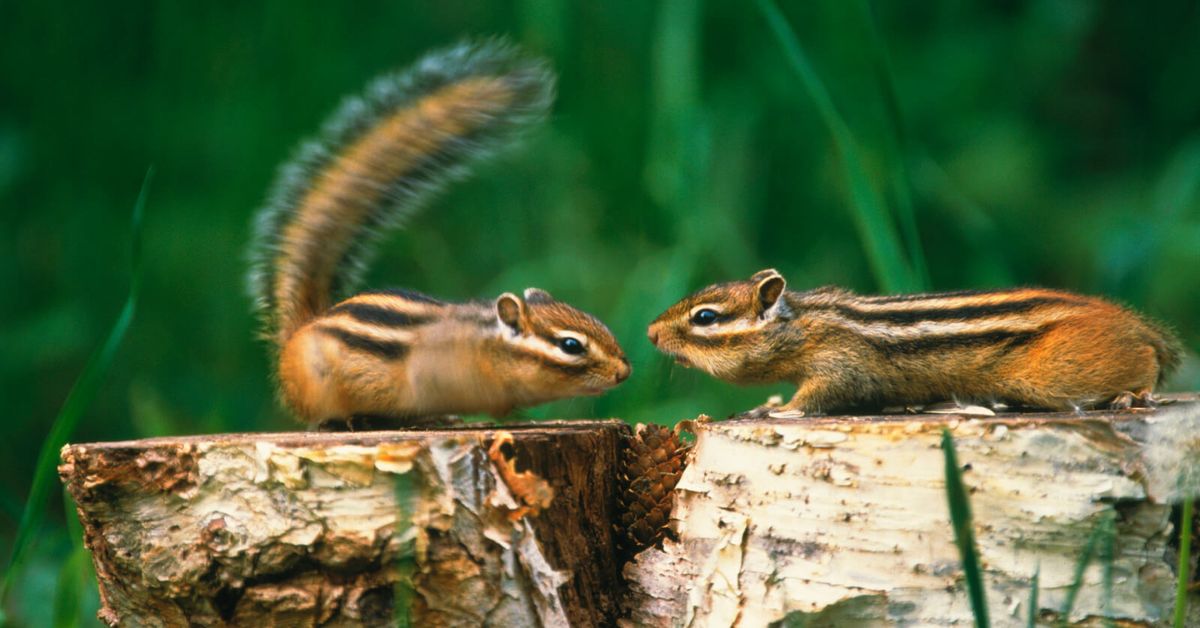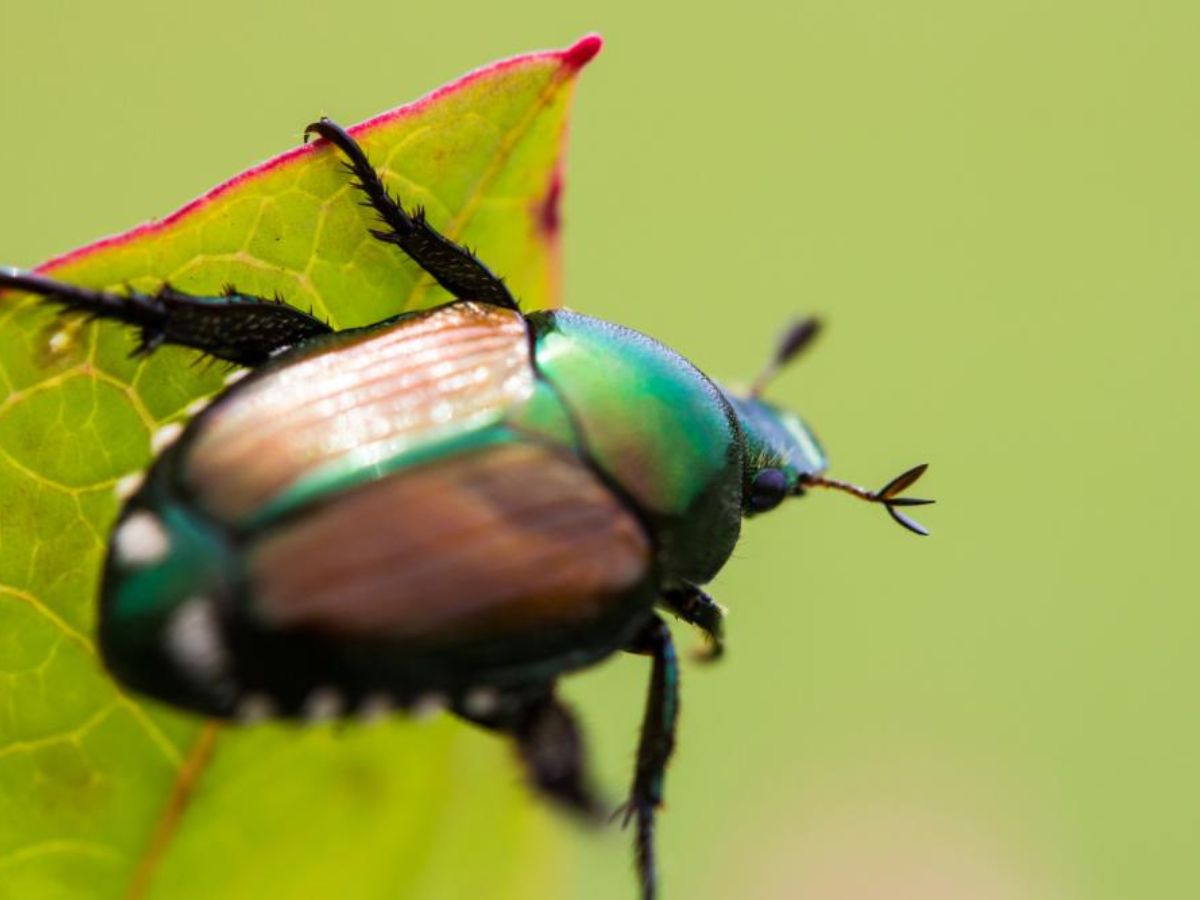In the delicate ballet of a well-tended garden, please get rid of snails in garden Naturally, the uninvited presence of snails can disrupt the harmony, leaving a trail of nibbled leaves and frustrated gardeners in their wake. While the instinct might be to reach for chemical solutions, there exists a more harmonious approach – a symphony of natural strategies that not only evict snails from your garden sanctuary but also cultivate a thriving, balanced ecosystem.
In this guide, we embark on a journey to explore and implement eco-friendly methods, from creating deterrent barriers to inviting nature’s predators, all with the aim of fostering a garden where plants flourish and snails respectfully bow out. Let’s dive into the world of natural snail management, where the beauty of your garden is preserved through sustainable and mindful practices.
Brief Overview of the Common Issue of Snails in Gardens:
The presence of snails in gardens is a widespread challenge that many gardeners encounter. These seemingly harmless lawn snails creatures can wreak havoc on plants, posing a threat to the overall health and aesthetics of your garden. Understanding the common types of snails and the signs of infestation is the first step in effectively managing this issue.
The Importance of Addressing Snail Problems Naturally:
Dealing with snail problems naturally is not just about preserving the environment; it’s a strategic choice for the well-being of your garden. Natural methods offer effective solutions without resorting to harmful chemicals, ensuring tiny snail shells in lawn the safety of both your plants and the ecosystem. By adopting natural approaches, you not only protect the delicate balance How to Grow Lemongrass of your garden but also contribute to a healthier, more sustainable gardening practice.
Overview of the Natural Methods to Be Discussed:
In this guide, we will explore a variety of natural and eco-friendly techniques to tackle snail infestations. From creating barriers that deter snails to introducing their natural predators, we’ll delve into methods that work in harmony with nature. Additionally, we’ll explore DIY remedies and sprays using common household items, empowering you with practical solutions to keep your garden snail-free.

Know Your Foe: Understanding Snails in the Garden
Identification of Common Snail Varieties:
Knowing your adversary is crucial in the battle against snail infestations. This section will provide an insightful exploration of the various snail varieties commonly found in gardens. By understanding the distinct features and behaviors of these species, gardeners can effectively target and address specific snail challenges. Whether it’s the common garden snail or a less conspicuous variety, this section aims to empower you with the knowledge needed to identify and manage different snail types.
Impact of Snails on Plants and Garden Health:
Delving into the intricate relationship between snails and garden ecosystems, this section will outline the detrimental effects of snail infestations on plants and overall garden health. From the destruction of tender shoots to the potential transmission of diseases, the impact of snails extends beyond mere nibbling. Recognizing the signs of plant distress caused by snails is key get rid of snails in garden naturally to implementing timely and effective interventions. By understanding the consequences of a snail invasion, gardeners can develop a proactive approach to safeguarding their green spaces.
Recognizing Signs of a Snail Infestation:
Snail infestations often leave subtle but distinctive clues in their wake. This section will guide gardeners in recognizing early signs of a snail’s presence, such as irregular holes in leaves, slimy trails, and visible damage to seedlings. By honing the ability to identify these indicators, gardeners can swiftly respond to potential infestations before they escalate. Early detection is paramount in implementing targeted control measures and preventing widespread damage, making this knowledge an essential tool in maintaining a thriving, snail-resistant garden.
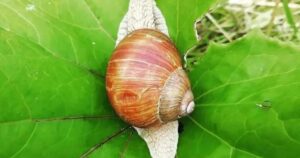
Creating an Unwelcoming Environment for Snails
Natural Barriers to Deter Snails:
- Copper Barriers: Unveiling the protective power of copper against snails, this section explores how strategically placing copper barriers can act as an effective deterrent. The natural reaction of snails to copper provides a sustainable and non-toxic solution to safeguard vulnerable plants.
- Crushed Eggshells: Dive into the resourcefulness of crushed eggshells as a natural defense mechanism against snails. This section highlights how the abrasive texture of eggshells forms an inhospitable terrain for snails, deterring their movement and protecting your plants in an eco-friendly manner.
- Diatomaceous Earth: Explore the natural armor of diatomaceous earth in the battle against snails. This section will elaborate on how this fossilized algae, when sprinkled around garden beds, creates a barrier that punctures and dehydrates snails, providing an organic and mineral-based solution.
Mulching Techniques to Discourage Snail Activity:
Uncover the protective benefits of mulching in deterring snail activity. This section explores how the strategic application of mulch not only helps retain soil moisture and suppress weeds but also creates an environment that is less favorable for snails. Discover the art of mulching as a multi-faceted approach to enhancing the health of your garden while naturally discouraging snail presence.
Proper Garden Cleanliness and Hygiene Practices:
Highlighting the importance of maintaining a clean and hygienic garden environment, this section emphasizes practices that deter snails. From promptly removing plant debris to minimizing areas of moisture accumulation, adopting proper garden cleanliness and hygiene practices is pivotal in reducing the attractiveness of your garden to snails. This section provides actionable tips for gardeners to create an environment that is less conducive to snail infestations, promoting overall garden health.
Mobilizing Natural Predators
Attracting Beneficial Wildlife:
- Welcoming Birds to the Garden: Explore the symbiotic relationship between birds and your garden in this section. Learn how creating bird-friendly environments with feeders, bird baths, and suitable nesting spaces can attract avian allies that feast on snails. This natural pest control method not only adds vibrancy to your garden but also establishes a harmonious ecosystem.
- Encouraging Amphibians and Reptiles: Delve into the world of garden-friendly amphibians and reptiles as natural snail predators. This section outlines ways to make your garden inviting to creatures such as frogs, toads, and lizards. By fostering a habitat that accommodates these beneficial species, you can establish a biological balance that keeps snail populations in check without resorting to chemical interventions.
Introducing Predatory Insects:
- Nematodes: Uncover the microscopic warriors in the fight against snails – nematodes. This section explains how these tiny, naturally occurring organisms can be introduced into the soil to target snail eggs and larvae. Nematodes act as biological control agents, providing an eco-friendly solution to snail infestations without harming other beneficial insects or plants.
- Ground Beetles: Explore the predatory prowess of ground beetles in maintaining a snail-free garden. This section details how these nocturnal hunters can be attracted to your garden and nurtured to become efficient snail predators. Ground beetles offer a natural and sustainable solution, contributing to the get rid of snails in garden naturally overall health and balance of your garden ecosystem.
DIY Remedies and Sprays
Homemade Snail Repellent Recipes:
- Garlic Spray: Unlock the natural power of garlic in deterring snails with this homemade spray. This section explores the simple yet effective recipe involving garlic and water, highlighting the aromatic compounds that make it an unwelcome scent for snails. Discover how to concoct this eco-friendly solution to protect neem oil slugs your plants without resorting to harsh chemicals.
- Neem Oil Solution: Delve into the world of neem oil as a versatile and natural snail repellent. This section details the process of creating a neem oil solution, emphasizing its dual benefits of deterring snails while promoting overall plant health. Learn how neem oil disrupts snail feeding habits without causing harm to beneficial insects or plants.
- Beer Traps: Uncover the intriguing use of beer as a trap to lure and eliminate snails. This section explains the science behind beer traps, attracting snails with the scent and then trapping them in the liquid. Explore the step-by-step guide to setting up beer traps effectively, turning a common beverage into a clever and natural solution for managing snail populations.
Practical Application Methods and Frequency:
Gain practical insights into applying homemade snail repellents with precision and effectiveness. This section guides the proper application of garlic spray, neem oil solution, and beer traps. From spray techniques to trap placement, learn the nuances of incorporating these natural remedies into your garden maintenance routine. Additionally, understand the importance of regular application intervals to ensure sustained protection against snails while minimizing the impact on your garden’s ecosystem.
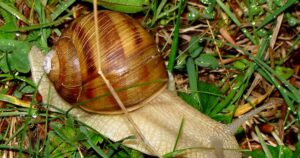
Smart Plant Selection for Snail Resistance
Choosing Plants that Snails Find Less Appealing:
Explore the world of plant selection as a strategic defense against snails. This section delves into the characteristics that make certain plants less attractive to snails, helping gardeners make informed choices for a resilient garden. From aromatic herbs to plants with rough textures, discover a variety of options that not only enhance your garden aesthetics but also naturally discourage snail infestations.
Implementing Companion Planting Strategies:
Uncover the art of companion planting as a holistic approach to snail management. This section introduces the concept of pairing plants that mutually benefit each other, creating an snail safe plants environment that snails find less favorable. Explore the symbiotic relationships organic slug pellets between different plant species that can act as natural deterrents or attract predators of snails. By strategically arranging plants, gardeners can enhance the health and resilience of their garden while minimizing the risk of snail damage.
Maintaining a Balanced Ecosystem
Emphasizing the Importance of Biodiversity:
Highlighting the vital role of biodiversity in garden health, this section underscores the significance of cultivating a diverse and balanced ecosystem. By embracing a variety of plant species, beneficial insects, and other organisms, gardeners contribute to a resilient and thriving environment. Learn how biodiversity acts as a natural defense mechanism, creating a dynamic ecosystem that is more resistant to pests, including snails. This section encourages a holistic approach to gardening that extends beyond individual plant care.
Practices to Promote a Healthy Garden Ecosystem:
Explore practical strategies to foster a robust garden ecosystem in this section. From responsible water management to avoiding excessive use of pesticides, discover practices that contribute to the overall well-being of your garden. By nurturing a healthy soil microbiome, encouraging beneficial insects, and creating habitat diversity, gardeners can establish a self-sustaining ecosystem that naturally regulates snail populations and promotes the long-term health of the garden. This section provides actionable insights into cultivating a thriving and balanced garden environment.
Tips for Long-Term Success and Prevention
Regular Monitoring and Early Intervention:
In this section, we delve into the importance of proactive garden management through regular monitoring and early intervention. Learn how consistent observation allows gardeners to detect signs of snail activity early on, enabling swift and targeted responses. Understand the significance of being attuned to your garden’s health, as early identification of snail presence empowers you to implement effective natural strategies before infestations escalate. Discover the art of keen observation as a fundamental tool in maintaining a resilient and flourishing garden.
Adjusting Strategies Based on Seasonal Changes:
Explore the dynamic nature of garden care in response to seasonal shifts. This section emphasizes the need to adapt snail management strategies according to seasonal changes, considering factors such as temperature, humidity, and plant growth cycles. Discover how tailoring your approach to each season ensures optimal effectiveness, acknowledging the variations in snail behavior and activity throughout the year. Learn to synchronize your efforts with the natural rhythms of your garden for a more targeted and sustainable approach.
Consistent Maintenance Practices for a Snail-Free Garden:
Uncover the key to a snail-free garden through consistent and proactive maintenance practices. This section provides practical insights into ongoing efforts that contribute to a garden environment less hospitable to snails. From routine cleaning and weeding to ensure proper drainage, explore the habits that establish a resilient and thriving garden. By maintaining a balanced ecosystem, gardeners can minimize the risk of snail infestations, creating a harmonious space where plants flourish, and pests are naturally kept in check.
Conclusion:
Recap of Natural Methods Discussed:
Summarize the arsenal of natural methods explored throughout the guide. From copper barriers to homemade repellents and the introduction of beneficial wildlife, revisit the diverse strategies available to gardeners seeking eco-friendly solutions for snail management. This recap serves as a handy reference, reinforcing the breadth of natural approaches at your disposal.
Encouraging Community Engagement and Shared Experiences:
Gardens thrive not only on the care of individuals but also on the collective wisdom of a community. In this subsection, we advocate for the sharing of experiences and insights among fellow gardeners. Whether through local gardening clubs, online forums, or social media platforms, fostering a sense of snail in house good or bad community enables the exchange of knowledge. It empowers everyone to navigate and overcome common challenges like snail infestations.
Emphasizing the Benefits of Maintaining a Natural, Balanced Garden Ecosystem:
Conclude by emphasizing the broader benefits of embracing a natural, balanced garden ecosystem. From promoting biodiversity and supporting beneficial wildlife to contributing to a healthier environment, maintaining a natural garden goes beyond mere pest control. Remind readers that their efforts not only safeguard their plants but also contribute to the overall well-being of the ecosystem.
In closing, let this guide serve as a compass for gardeners on a quest for a snail-free haven, where the principles of nature guide the way to a flourishing, balanced, and sustainable garden.


